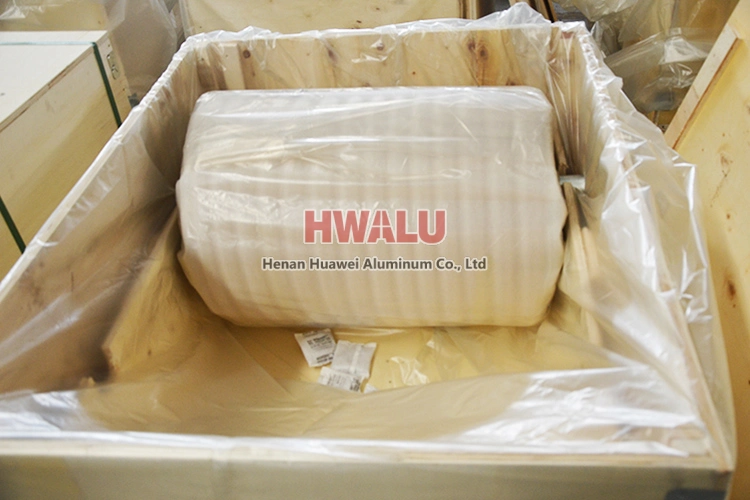What is aluminum foil for insulation? Aluminum foil for insulation is a type of aluminum foil that is used in various forms of insulation to help reduce heat loss or gain. It is a highly effective material for thermal insulation due to its low thermal emissivity and high reflectivity. Aluminum foil for insulation is commonly used in the construction industry for insulating walls, roofs, and floors of building ...
How to define light gauge aluminum foil? Light gauge aluminum foil usually refers to aluminum foil with a thickness of less than 0.01mm, that is, aluminum foil with a thickness of 0.0045mm~0.0075mm. 1mic=0.001mm Example: 6 mic aluminum foil, 5.3 mic aluminum foil Aluminum foil with thickness ≤40ltm can also be called "light gauge foil", and aluminum foil with thickness >40btm can be called "heavy gau ...
What is a lidding foil? Lidding foil, also known as lid foil or lid, is a thin sheet of aluminum or composite material used to seal containers such as cups, jars, and trays to protect the contents inside. Lidding foils come in a variety of shapes, sizes, and designs to suit different types of containers and packaging applications. They can be printed with branding, logos, and product information to enhance a ...
What are the common aluminum foil customizations? Thickness: The thickness of the aluminium foil can be customized according to the specific application. For example, packaging foil is usually thinner than kitchen foil. Size: Aluminum foil can be customized according to the size required, for example, aluminium foil for cooking can be cut to the size of a baking tray. Surface treatment: Aluminum foil can b ...
Aluminum foil parameters Raw Material 1235, 3003, 8011 etc Alloy Temper O, H28, etc Thickness 6.5 micron, 10 microns, 11micron( 11 microns), 20micron, 130-250mic ( for laminated foil cold forming ) Size 3000m, 80 cm, etc We can provide jumbo roll aluminum foil Product Name Alloy Temper Thickness or Gauge(mm ) Width(mm ) Surface Finishing Use Aluminum Foil For Foo ...
Huawei Aluminum: Your Trusted Source for 50 Micron Aluminum Foil Welcome to Huawei Aluminum, your one-stop destination for high-quality 50 micron aluminum foil. We are a renowned aluminum foil factory and wholesaler, specializing in manufacturing and distributing a wide range of aluminum foil products. With a commitment to excellence and a focus on meeting the unique needs of our customers, we have established o ...
Aluminum foil has good moisture-proof properties. Although pinholes will inevitably appear when the thickness of the aluminum foil is less than 0.025mm, when observed against light, the moisture-proof properties of aluminum foil with pinholes are much stronger than those of plastic films without pinholes. This is because the polymer chains of plastics are widely spaced apart from each other and cannot prevent wat ...
In the production process of aluminum foil, there are multiple processes such as rolling, finishing, annealing, packaging, etc. The interlocking production process, any problem in any link may cause aluminum foil quality problems. The quality defects of the purchased aluminum foil products will not only affect the appearance, but also directly affect the quality of the products produced, and even more directly ca ...
Product name: plain aluminum foil SIZE (MM) ALLOY / TEMPER 0.1MM*1220MM*200M 8011 O
Color-coated aluminum foil is an aluminum foil material with a coated surface. By applying one or more layers of organic coatings or special functional coatings on the surface of the aluminum foil, the color-coated aluminum foil has the characteristics of diverse colors, beautiful and durable, and diverse functions. Color-coated aluminum foil has many product characteristics, beautiful, weather-resistant, durabl ...
Extra-wide aluminum foil serves several purposes and finds applications in various industries. Here are some common uses for extra-wide aluminum foil: Extra wide aluminum foil for Industrial Insulation: Extra-wide aluminum foil is often used for insulation in industrial settings. It is effective in reflecting radiant heat, making it suitable for insulating large areas in construction, manufacturing, and oth ...
Product name: industrial aluminum foil roll Item Specification (mm) Description ALUMINUM FOIL ROLLS WITH SUPPORT FOR INDUSTRIAL USE 8011-O, 0. 014 (+/-4%) *300 (+/-1mm). Outside -matt Inside - bright ID 152 OD min 450, Max 600. Elongation - min 2% Tensile strength - min 80, max 130MPa. Porosity - max 30 pcs per 1m2. Wettability - A. Splices - maximum 1 splice per ...












